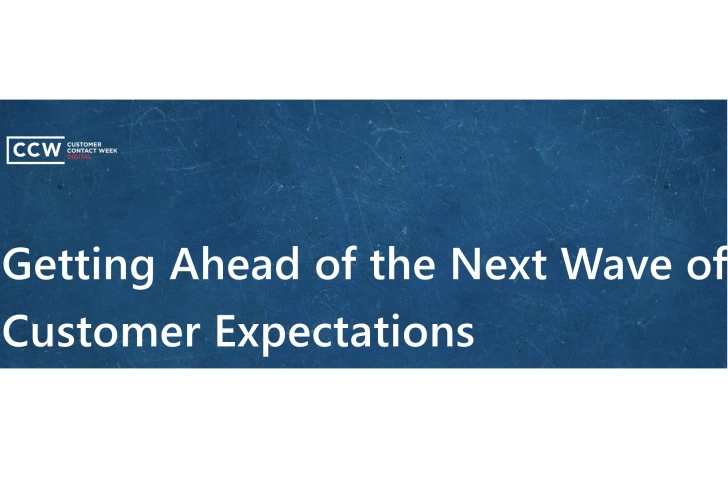Customers Crave Self-Service, So Why Don't They Trust Your Chatbots?
Add bookmark
Consumers identify extensive waiting as the most frequent pain point they experience when interacting with brands. Making matters worse, the service they receive is not even worth the wait: roughly two-thirds do not feel support agents know or care about the customers, brands, or issues they are serving.
Collectively, these statistics reveal that customers are disillusioned with the traditional, agent-led, phone-based service process. They are craving an option to self-serve.
Not simply speculation, this conclusion is rooted in fact. A whopping 86% of consumers, in fact, say they are willing to solve at least some problems without help from an agent. Roughly 90%, meanwhile, are more likely to support a brand that offers easy, convenient digital experiences.
Yet if consumers are so frustrated with traditional support experiences, and so easy to resolve their own problems in digital channels, why do today’s chatbots have such a bad reputation? Why do three-quarters of customers still expect brands to offer live agent support for all or most issues? Why do only 15% of consumers trust chatbots to solve their problem? Why do so many request a live agent before even giving the bot a chance?
The answer is simple: today’s chatbots are not built for today’s customers. They may technically fall under the category of “self-service,” but they do not actually empower customers to achieve their engagement goals. They also lack some fundamental qualities that consumers deem essential to a great experience.
Waving a white flag in defeat, some brands will accept this status quo. They will continue to deploy ineffective self-service tools and thus continue to disappoint customers during the initial point of contact. They will also continue to endure the costs and employee experience challenges of escalations.
Others, however, will embrace a next-generation of self-service. They will pursue platforms that harness the power of AI to deliver more personalized, informative, conversational, and connected experiences across the entire journey.
Why Self-Service Is Essential For Today’s Contact Center Operations
Customers demand the efficiency of a robust self-service option, which alone makes “waving the white flag” an unacceptable option in today’s marketplace. But there are also other reasons to ensure self-service is more attractive and effective throughout the journey.
Employee need: Companies identified talent acquisition and retention as the #1 contact center pain point for 2022, and the looming recession will only exacerbate resource challenges. An option for reducing inbound call volume – and allowing employees to focus on the most valuable interactions possible – is essential for success.
Employee experience: Even if companies have the headcount to handle all issues, they cannot ignore the experiential impact. Today’s agents are seeking more dynamic and fulfilling work; asking them to spend most of their time on simple issues – especially without context about the customers and issues they are supporting – will create the kind of frustration that drives disengagement, poor performance, and churn.
Intelligence: As brands look to increase personalization and reduce effort, they need to gain comprehensive, actionable information about their customers, their preferences, and their intentions. Self-service tools can acquire this actionable intelligence but only if customers actually feel comfortable engaging with them. If all the customer says is “agent, agent, agent,” the brand gains nothing beyond confirmation that the customer does not trust the bot.
Rethinking Self-Service As A Pathway To Frictionless, Personalized Experiences
Clearly, the idea of self-service is not the problem. It aligns with customer needs and promises to buoy customer contact operations during times of uncertainty.
The issue, instead, is today’s self-service. It is therefore time for brands to ensure they avoid the pitfalls that gave chatbots (and, previously, IVR platforms) a bad name and embrace a next-generation approach to self-service.
Rethink Customer Use Cases: Ultimately, an effective self-service offering will lead to a reduction in costly inbound call volume. This outcome will only come to fruition, however, if brands take a customer-centric approach to its adoption.
If brands only focus on the potential for deflection, they will impose bots on the wrong customers, for the wrong use cases, at the wrong times. Customer-centric self-service, on the other hand, delivers value at key moments of truth.
By analyzing customer feedback and journey maps, brands can identify inefficient processes and interactions that would be better-served with self-service. From there, they can deploy bots that deliver real value – and cultivate real customer trust.
Leverage AI Technology To Enhance Self-Service Experiences: Chatbots may theoretically be an intelligent technology, but many do not leverage AI capabilities. They offer little beyond what customers could access from an instructional video or FAQ page.
Next-generation bots, on the other hand, harness the power of AI to make experiences more conversational, data-driven, and personally relevant for customers. This further enhances the value of self-service, creating experiences that are superior to agent-led care for certain use cases (as opposed to just somewhat acceptable alternatives).
Prioritize Data and Knowledge: At the core of an effective self–service initiative is an effective data strategy.
- The bot is seamlessly connected to knowledge bases and customer data platforms to ensure communication is accurate, relevant, and personalized.
- The bot receives ample and continuous AI “tuning” to ensure it stays on the pulse of industry trends, new company policies and products, and evolving customer intentions, preferences, and behaviors.
- The bot leverages conversational AI and natural language understanding to ensure customers can communicate in their organic voice.
- The bot captures vital information during interactions and passes the intelligence to relevant systems and stakeholders. With real-time access to this intelligence, agents can seamlessly “take over” when bots hit dead-ends. The overall business, meanwhile, can reorchestrate journeys, redesign conversation flows, and update knowledge bases to further reduce friction and increase value.
- The bot offers meaningful measurement opportunities to ensure the company can understand utilization rates, trust levels, and escalation volume. This data will not only lead to better bot experiences but help the company better manage future workflow.
Consider the Agent Experience: Whether by capturing “qualifying” information that can be passed to an agent upon escalation or by outright solving certain issues, the best self-service platforms optimize agent workflow and performance.
Successful companies will ensure that their platforms are making good on this opportunity, while also keeping a pulse on how agent workflow and competency needs are changing. From there, they can recalibrate training and rethink recruiting to cultivate talent best-suited for working with bots to elevate the overall experience.
Don’t Forget Trust: Only 15% of consumers presently believe chatbots can solve their problems, which means the typical customer is not going to trust a brand’s “new” self-service offering at the drop of a hat. They need to know it will deliver a valuable experience for them, which means brands need to think about education and conditioning.
Beyond making sure the bot delivers value, companies may have to develop marketing around the bots. The savviest will let customers know about the “time they could have saved” or “bonus they could have gotten” by using a chatbot instead of escalating to an agent.
As part of the education mechanism, leading companies will focus intently on agent training. They will ensure that agents not only personally understand the value of bots (to prevent unease about “job redundancy”) but know how and when to market these bots to customers.
Remember, The Goal Is The Experience: For as much as self-service utilization is a distinct priority that warrants its own metrics, it is ultimately a piece of a larger puzzle. It is ultimately part of a broader effort to create more convenient and personalized experiences.
A next-generation self-service initiative involves embracing this reality and ensuring that every facet of the self-service experience – from where it is deployed, to how it functions, to how it manages data, to how it fuels escalation – leads to a better overall experience.
Action Plan For Transforming Self-Service
The value of next-generation self-service is not simply relevant enough to drive a customer contact article. It is relevant enough to rank as the #1 AI focus for customer engagement leaders.
It is consequently essential to provide action steps – not just stats, commentary, and argumentation – on the pathway to next-generation self-service. An abbreviated look at these steps follows; the full list will be revealed in the upcoming Power-Up Masterclass Series.
- Pre-implementation: Establish your standard for great CX and EX, identify “pain points” throughout your journey, consider the best AI self-service use cases, assess how they will positively or negatively impact the experience, and determine the ROI you should be expecting.
- Implementation: Deploy the technology, paying careful attention to the impact it has on conversation flow, the requirements to maintain and optimize the technology, and the sentiment of customers and agents.
- Post-implementation: Rethink customer and agent training based on self-service, Adjust workflow as journeys transform, Reconsider how self-service will impact your core CX metrics, Identify future use cases
Next Steps On The Road To Success
To support your self-service journey, Sheila McGee-Smith of McGee-Smith Analytics, Brian Cantor of CCW Digital, and Derek Roberti of Cognigy will be commencing the Power-Up Masterclass Series “How To Achieve, Perfect & Scale Next-Generation Self-Service” on October 6, 2022.
Secure your free place by registering here.























